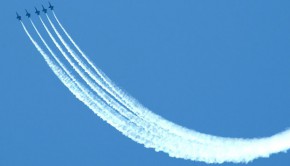Accurately Recreating EW Signal Environments
Simulation has long been a key part of electronic systems for military use, mimicking the behavior of—and helping with training on—a variety of different systems. Among these are electronic-warfare (EW), surveillance, communications, and radar systems. Military users rely on a wide range of simulation systems but, in particular, electronic gear that recreates EW environments is of particular interest, since EW systems can stand between life and death.
What follows is a brief summary of some of the functions that are essential for EW simulations, along with some examples of the current electronic products that can provide and support these functions.
Simulators of EW functions have grown in sophistication as the EW systems they imitate have developed. For example, EW signal sources have embraced advanced modulation schemes and the use of Doppler effects for direction finding (DF)—with the aid of such technologies as direct digital synthesis (DDS)—and the signals used in many EW systems have grown extremely complex. This enables improved security of these signals in hostile EW environments, but also makes simulation of those signals more challenging.
Receivers of EW signals have also improved with time, gaining in dynamic range and sensitivity as receiver integrated circuits (ICs) and low-noise amplifiers (LNAs) have improved in performance. As the EW systems themselves reach higher levels of performance, the simulators must follow.
Full article by Jack Browne, Defense Electronics Magazine






























































































































































